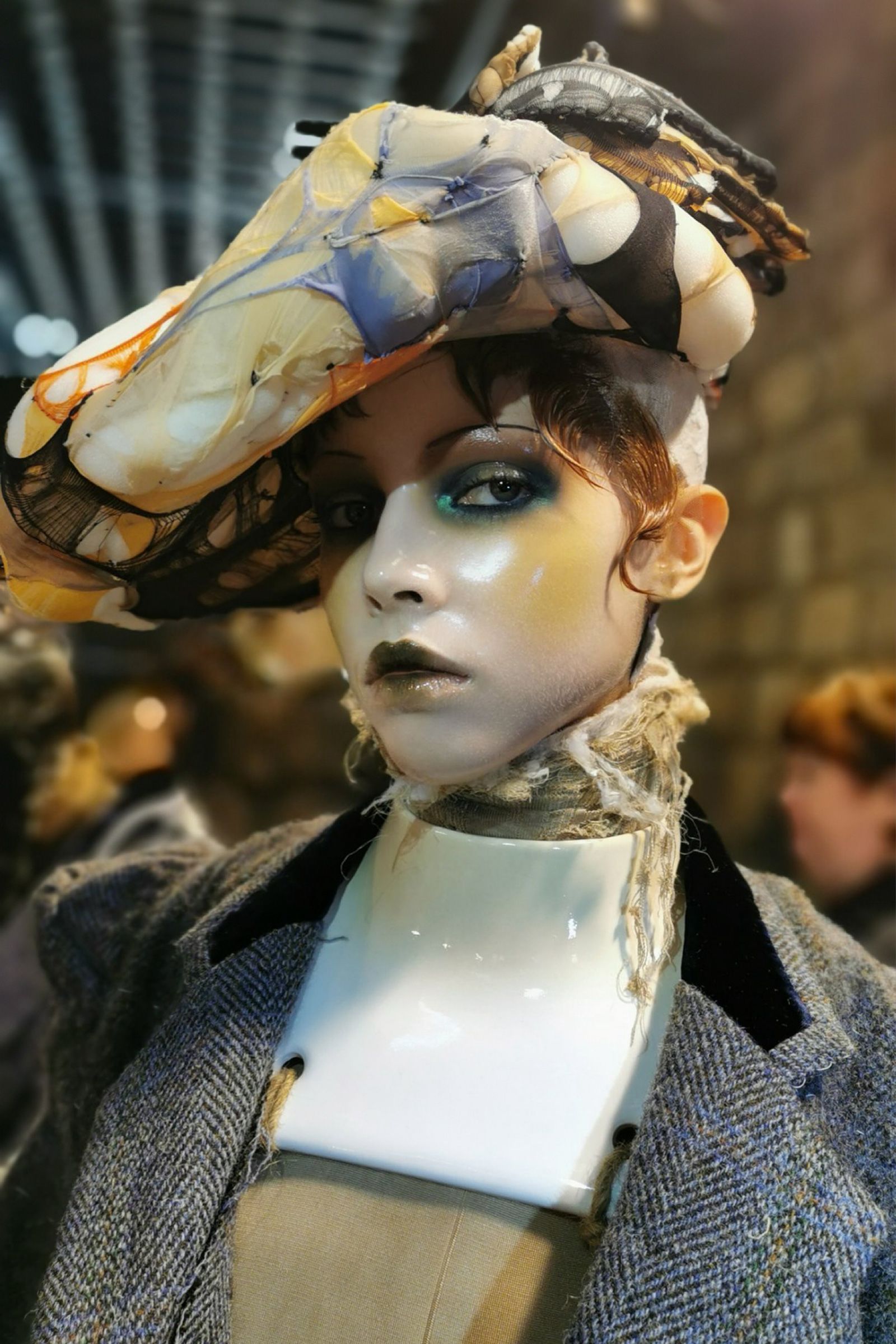CNN
—
It’s been more than a week since the beauty looks created by makeup artist Pat McGrath for Maison Margiela’s Spring-Summer 2024 Haute Couture show captured collective imaginations, and the internet is still abuzz.
The legendary creative — deemed the most influential makeup artist in the world by Vogue magazine — transformed models into living dolls, complete with porcelain skin, pencil-thin eyebrows and strikingly shaded eyes, lips and cheeks. But it was the waxen, glazed complexions she created that really stole the show, spawning countless pieces of magazine analysis and TikTok tutorials, some of which have already amassed millions of views.
During an Instagram Live on Friday in which she and her team replicated a look from the Margiela show, McGrath praised much of the beauty sleuthing and fan recreations, adding that she also “saw things that kept me awake at night.”
With the products used by McGrath to achieve the glistening complexions shrouded in secrecy until her live broadcast, online speculation had reached fever pitch this week. Fueled by post-show video footage of models shedding what appeared to be a second skin, some to believe that McGrath had used a peel-off mask diluted with water and airbrushed on in layers. Others claimed that the high-shine effect was created with a product from professional makeup brand Kryolan called “Liquid Glass” — a theory the internet was so taken with that it promptly sold out (and garnered a three-week-long waiting list) despite McGrath suggesting it was “amazing,” but not “the real product.”

Speaking to CNN, a spokesperson for Pat McGrath Labs — the beauty brand founded by the makeup artist — appeared to confirm the face mask theory: “Pat McGrath Labs has always been centered around creating products and formulations that have never existed before, and Pat and her team had been working on one formula in the lab for some time now… Backstage for Margiela, she combined several products for the show, including face masks (one of which was cucumber) and the perfect amount of water,” they said.
This technique was “the most challenging piece of the puzzle,” the spokesperson continued. “Making sure we could achieve a high-reflective glass finish without tampering with the make-up underneath. That’s where the airbrush came in. We understand that people don’t want to mix a ton of products and buy an airbrush machine. That’s why we will be dropping one product that will give you the perfect glass finish.”
On Instagram Live, McGrath and her team revealed a few of the eight products used to create the airbrushed concoction, including peel-off face masks from Freeman Beauty, Proot and Que Bella. McGrath’s team sprayed seven to eight layers of the composite mask on each model, she said, a time-intensive process to ensure their glassy skin wouldn’t lose its luster before the show.
A few more secrets from McGrath’s masterclass: To achieve the “porcelain foundation” look on light-skinned models, her team blended her eponymous line’s Sublime Perfection Foundation with white theatrical paint. Before airbrushing, the artists dabbed water-based special effects glue around the corners of models’ lips and noses, both for sealing and extra (extra) gloss. The models themselves also helped seal each layer of glass skin, blow-drying their faces in a process that took anywhere from 45 minutes to two hours, McGrath said.
From ‘glass skin,’ to the ‘glazed donut’
McGrath’s creations are just the latest — albeit most extreme — example of the trend for high-shine, seemingly poreless and flawless complexions with an almost wet looking sheen. Originally dubbed “glass skin,” the look is thought to have originated in Korea as early as 2013, but didn’t make its way into wider popular culture for another four years, when high profile beauty influencers began sharing the extensive skincare routines they employed to achieve it.
While “glass skin” was all about leaving the face bare but with a glistening sheen, 2020s “dolphin skin” trend took things to the next level. Credited to makeup artist Mary Phillips, the aesthetic was not just about optimizing your own skin, but also layering color cosmetics with skincare to give a sleek, shiny, dolphin-just-out-the-ocean effect. Achieving it was not for the faint of heart — or the short of time. Creating “dolphin skin” requires a multi-step process involving exfoliating the skin before layering on serum, moisturizer, a hydrating mist, liquid highlighter, foundation, more highlighter, then more mist.

Like “glass skin” before it, “dolphin skin” was a sensation on social media, but not everyone was a fan. In 2021, UK-based facialist and skin expert Andy Millward said the look promoted “an unrealistic expectation of what healthy skin should look like,” and added “the extreme shiny (or) wet look isn’t something we should be striving for.”
Not that that stopped 2022’s shiny skin trend, popularized by model Hailey Bieber, which was then dubbed the “glazed donut” look.
Celebrity makeup artist, Monika Blunder whose clients include Gemma Chan, Jessica Alba, Kate Hudson and Megan Fox, told CNN that McGrath’s “amazing” airbrushed Margiela looks were not really feasible “for every day.” However, she had suggestions “to create something similar and more wearable at home.”

Prepping skin perfectly is key — she recommended starting with a face oil before applying a foundation or base, and then skipping powder to keep the shine.
“After you’ve done your makeup, you can really bump up the glow by adding another thin layer of oil over the top, or for extra shine that won’t move around as much, my favorite hack is to use a clear balm as a highlighter.”
Because if the legions of McGrath fans flooding social media over the past week has been anything to go by, the trend is showing no signs of losing its luster for 2024.
Scottie Andrew contributed to this report.
